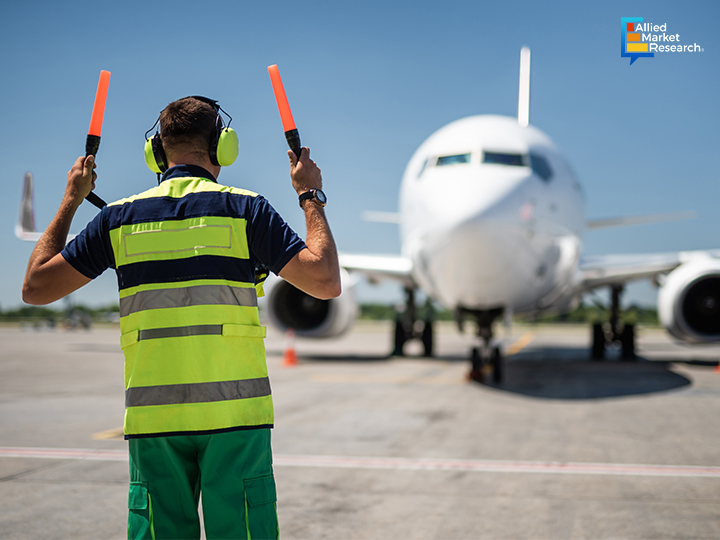How Aviation Asset Management Is Influencing Smarter and Safer Fleet Operations

9 Jul
2025
Highlights:
- Introduction
- Smart Fleet Management
- Tech-Driven Maintenance
Managing aircraft assets is not an easy task, and in today’s evolving aviation space, it’s becoming even more important to handle fleets in a smarter and more cost-effective way. Aviation asset management is all about overseeing, maintaining, leasing, and trading aircraft and related components. The service plays an essential role in helping airlines, lessors, and financial institutions stay operational, compliant, and financially sound. From aircraft selection to end-of-life planning, every part of this chain requires careful attention. The rise in demand for more efficient operations, better financing options, and stronger lease management has prompted companies to rethink how they approach their aviation assets.
Leasing and Lifecycle Oversight Becoming Core Focus Areas
Aircraft leasing has been one of the most dominant areas in aviation asset management. These days, airlines around the world rely on leased aircraft to save money and stay flexible. Asset managers, at the same time, play a key role in structuring these leases, tracking obligations, and ensuring that aircraft remain in top condition throughout the lease term.
Phoenix Aviation Capital gained recognition this year from AirFinance Global for its strong performance in managing lessor portfolio risks. Such acknowledgment shows how important it has become to maintain a healthy asset book while keeping risk exposure under control. Asset managers not only have to keep aircraft airworthy but also ensure that they maintain their value over time. This includes scheduling heavy maintenance checks, managing returns from lessees, and preparing the aircraft for remarketing or part-out operations. With narrow-body and wide-body aircraft having very different cost profiles and usage trends, understanding the entire lifecycle of each type is very important.
Digital Transformation is Speeding Up Maintenance and Decision-Making
Modern tools have changed how aviation assets are tracked and maintained. The use of predictive analytics, blockchain-based tracking, and digital twins has made aircraft management more data-driven than ever. These technologies help identify wear and tear, forecast maintenance needs, and even support real-time decision-making on parts replacement.
For instance, airports like the one in Prague are showing how advanced tech can improve not only the passenger experience but also the way operations are managed. In a feature covered by Forbes, Prague Airport’s new initiatives have improved turnaround times and resource allocation. Although the primary goal was to improve the traveler experience, it also helped ground teams work more efficiently, boosting aircraft uptime and preserving asset value
Asset managers have started leaning heavily on software systems that provide clear dashboards on aircraft performance, lease terms, compliance records, and technical documentation. These systems make it easier to comply with aviation authority rules and manage complex portfolios involving different jurisdictions, aircraft ages, and usage patterns. Maintenance, Repair, and Overhaul (MRO) planning is also benefiting from this tech-led shift, helping reduce unplanned downtime and repair costs. According to Allied Market Research, the aviation asset management industry contributed to $122.5 billion in 2023 and is expected to reach $199.4 billion by 2034, citing a CAGR of 5.2% during 2024-2033.
Global Partnerships Influencing Fleet Management Strategies
Another important area of aviation asset management is working with manufacturers and service providers to keep fleets updated and compliant. The recently signed agreement between Airhub Aviation and Airbus illustrates this clearly. The contract includes support for a comprehensive fleet renewal and technical services. This kind of partnership helps operators access not just newer aircraft but also structured maintenance and training programs.
When asset managers collaborate with manufacturers like Airbus, they gain access to OEM (Original Equipment Manufacturer) data, maintenance records, and upgrade pathways. This information is essential for planning asset refreshes and ensuring that the fleet meets environmental and regulatory standards. These collaborations also support resale values, as aircraft with certified updates and thorough documentation are easier to trade or lease again.
This model of working closely with OEMs and support vendors is especially helpful for smaller operators or regional airlines, which often lack in-house technical expertise. For them, aviation asset management services ease both operational and financial burdens by managing lease talks, delivery timelines, engine overhauls, and even insurance
A Complicated Space Needing Skilled Oversight
The aviation world deals with multiple uncertainties—rising fuel costs, changing travel demand, and stricter regulatory frameworks. All these factors directly affect how assets are used and maintained. Asset managers always try their best to keep aircraft in top condition for leasing or resale, while also minimizing downtime.
With more financial institutions and investment firms moving into aviation finance, the demand for skilled asset management is increasing. These firms need teams who understand both aviation technicalities and financial risk. Whether it’s a mid-life engine inspection or a redelivery check, missing small details can lead to big financial losses. That’s why experienced asset management service providers are playing an even bigger role, not just in keeping aircraft flying but also in protecting investments.
Even in growing hubs like Southeast Asia and Eastern Europe, asset managers are playing a key role in managing the increasing fleet sizes. Airports, leasing companies, and airlines are working more closely to develop integrated asset strategies that cover everything from aircraft procurement to recycling. It’s not just about aircraft anymore; it’s about engines, avionics, and support equipment, all of which need equal attention.
Closing Thoughts
Aviation asset management has become more than just a back-office function. It’s now an integrated service that combines engineering, finance, and legal expertise to help stakeholders manage fleets more wisely. Whether it’s through digital tools, OEM partnerships, or leasing know-how, asset managers are making aviation operations more agile and less risky.
Reach out to our team of experts to learn more about the rolling trends in the aviation asset management industry.

Koyel Ghosh
Author’s Bio- Koyel Ghosh is a blogger with a strong passion and enjoys writing in miscellaneous domains, as she believes it lets her explore a wide variety of niches. She has an innate interest in creativity and enjoys experimenting with different writing styles. A writer who never stops imagining, she has been serving the corporate industry for the last five years.
Avenue: Entire Library membership of Allied Market Research Reports at your disposal
- Avenue is an innovative subscription-based online report database.
- Avail an online access to the entire library of syndicated reports on more than 2,000 niche industries and company profiles on more than 12,000 firms across 11 domains.
- A cost-effective model tailored for entrepreneurs, investors, and students & researchers at universities.
- Request customizations, suggest new reports, and avail analyst support as per your requirements.
- Get an access to the library of reports at any time from any device and anywhere.
Related Post
-
How are Submarine Cables Transforming Global Connectivity with Enhanced User Experience?
-
Endoscopy Procedures: Transformations in Techniques and Applications
-
AI-Powered Video Analytics: How the Product Actually Works for enterprises
-
Painting Robots: Transforming Precision Coating and Creative Applications
-
Innovations in Pharmacovigilance Systems Advancing Patient Safety
-
Understanding Edge Security: Keeping Data Safe Near the Source
-
Exploring the Use and Advancements of 3D Laser Scanners in Professional Applications
-
Reinforcing Industrial Controls with Smarter Tools and Training








